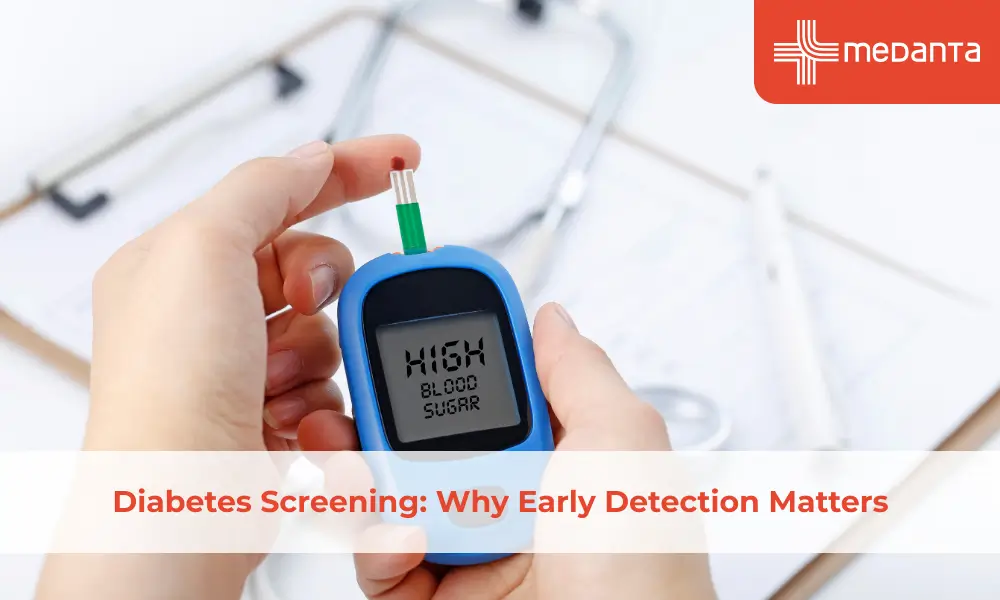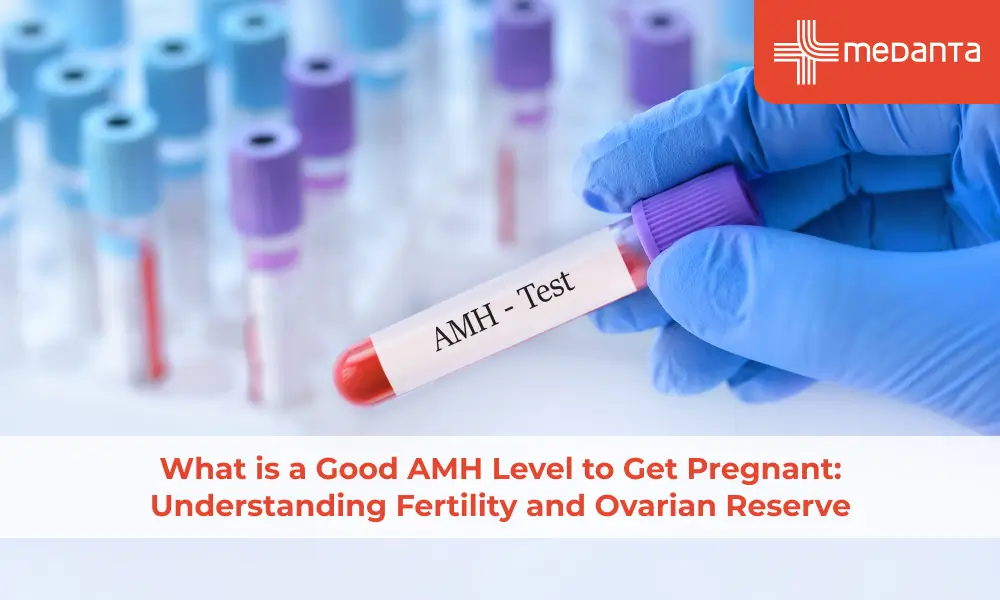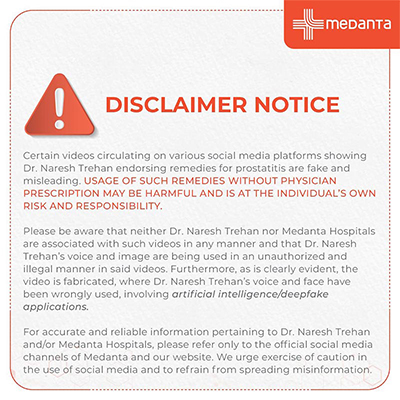Diabetes Screening: Why Early Detection Matters

TABLE OF CONTENTS
People can have diabetes for years without knowing it, which makes early detection essential. Millions of adults live with diabetes, and many show signs of pre diabetes. The most important concern is that almost one-quarter of patients already have diabetes-related complications when doctors diagnose them.
Diabetes ranks as the primary reason for kidney failure & new cases of blindness in adults. It also leads to thousands of amputations of feet, legs and toes every year worldwide. These numbers show why diabetes screening is so important.
Early detection brings life-changing benefits. Research proves that diabetes screening helps reduce heart attacks and complications by three to nine cases for every 1,000 patients screened. Patients who receive early diagnosis and proper treatment have much better survival rates and fewer heart problems compared to those who don't get early care.
Most patients face a 4-7 year gap between the start of high blood sugar and their actual diagnosis. Blood vessels and nerves can deteriorate during this time, even while someone feels healthy. Regular screening helps people take control of diabetes before it causes serious health problems.
Signs You Might Need a Diabetes Test
Your body sends quiet signals when something's wrong. These warning signs play a crucial role in the screening of diabetes early.
The need for a diabetes test becomes clear with several warning signs. These include:
Need to change your eye glasses frequently.
Difficult to heal wounds.
Infection in private parts.
If you have family history of diabetes.
Extreme thirsty.
Frequent bathroom visits at night.
You could lose weight without explanation.
Feel unusually hungry.
See things less clearly.
Feel tired all the time.
The situation becomes serious when you feel numbness in your hands or feet, notice very dry skin, wounds that won't heal, or get infections often.
Type 1 diabetes hits faster—within weeks or months—and brings nausea, vomiting, or stomach pain.
Type 2 diabetes works differently. Its symptoms sneak up over the last several years, and some people don't notice anything unusual.
Some people need screening for diabetes even without symptoms. Here's why:
Age 45 or older
Carrying extra weight or obesity
Type 2 diabetes runs in the family
Not enough physical activity
Past gestational diabetes or delivering a baby weighing over 9 pounds
African American, American Indian, Asian American, Alaska Native, Hispanic/Latino, Pacific Islander heritage
The doctor should check you right away for screening of diabetes mellitus if symptoms appear or multiple risk factors exist.
Diagnostic Tests for Type 2 Diabetes
Doctors can confirm diabetes through multiple tests.
Glycated haemoglobin test: The glycated haemoglobin (A1C) test shows your average blood sugar over 2-3 months without fasting.
Fasting blood sugar test: Blood sugar tests taken after overnight fasting measure glucose at its lowest point.
Random blood sugar test: You can take random blood sugar tests any time, regardless of your last meal.
Oral glucose tolerance test: The oral glucose tolerance test monitors how your body handles sugar for two hours after you drink a sugary solution.
What Is the Normal Range for Blood Sugar?
People without diabetes typically have blood glucose levels between 70 and 99 mg/dL.
Normal A1C readings stay below 5.7%.
Normal fasting blood sugar reads less than 100 mg/dL.
Readings between 100-125 mg/dL suggest prediabetes.
Glucose tolerance test readings work differently -
Below 140 mg/dL is normal
140-199 mg/dL signals prediabetes
Above 200 mg/dL suggests diabetes.
Understanding Your Diabetes Test Report
A single abnormal reading doesn't automatically mean you have diabetes. Your doctor might run more tests to confirm. Blood glucose levels naturally fluctuate, which makes A1C tests more reliable since short-term changes affect them less.
When and How Often to Get Screened
The American Diabetes Association suggests adults should start screening at age 35. Risk factors might require earlier screening. People with normal results should test every three years. Yearly testing becomes necessary with prediabetes. Those who experienced gestational diabetes need screening every three years.
Conclusion
Diabetes screening plays a vital role in fighting this silent disease. People who catch diabetes early have much better outcomes. Studies show they experience fewer complications and lower death rates. Your body often sends warning signs you shouldn't ignore - frequent bathroom trips, constant thirst, and unexplained weight loss. All the same, many people show no symptoms at all, which makes regular screening crucial.
Your age, family's medical history, and ethnic background help determine if you need testing. You should get regular screenings if you are over 35 or have multiple risk factors. People with prediabetes need yearly tests to track their condition carefully.
Getting tested isn't complicated. Blood tests like A1C, fasting glucose, and oral glucose tolerance give clear signs of how your body handles sugar. These results help patients take control of their health before serious problems develop.
The evidence leads to one clear conclusion - finding diabetes early saves lives, vision, limbs, and kidneys. Proactive screening gives you the best chance to prevent or delay complications instead of waiting for symptoms. Diabetes might be common, but it doesn't have to wreck your life. Regular screening and early treatment help people maintain their quality of life after diagnosis. Knowledge becomes real power when managing diabetes effectively.
FAQs
What is the normal blood sugar range in diabetes screening?
Readings below 100 mg/dL - normal fasting blood sugar
Readings between 100-125 mg/dL - prediabetes.
Readings at or above 126 mg/dL - diabetes.
Blood sugar readings below 140 mg/dL after meals fall within normal range.
A1C test results:
Below 5.7% - normal
5.7%-6.4% - prediabetes
6.5% or higher - diabetes
Who should get tested for diabetes?
Regular screening becomes necessary after age 35. Risk factors like obesity, diabetes in the family, or belonging to high-risk ethnic groups make testing important even at younger ages. Women with a history of gestational diabetes need testing every three years.
What tests are done to diagnose type 2 diabetes?
Doctors use several key tests. These include the A1C test that measures average blood sugar over 2-3 months, the fasting blood glucose test, the oral glucose tolerance test and the random blood glucose test. A second test usually confirms the initial results.
Can diabetes be detected with a simple blood test?
Simple blood tests can detect diabetes effectively. Symptoms paired with random blood sugar readings above 200 mg/dL indicate diabetes. The A1C test provides reliable results without requiring fasting.
Do I need to fast before a diabetes screening?
The type of test determines fasting requirements. A1C tests work without fasting. Fasting blood glucose tests need 8-12 hours without food. Standard health check-ups typically require 10-12 hours of fasting.
Is diabetes screening covered in health check-up packages?
Most health check-up packages include crucial diabetes tests like HbA1c, fasting insulin, and blood sugar. These comprehensive packages also check kidney function, liver health, and other vital health markers.






